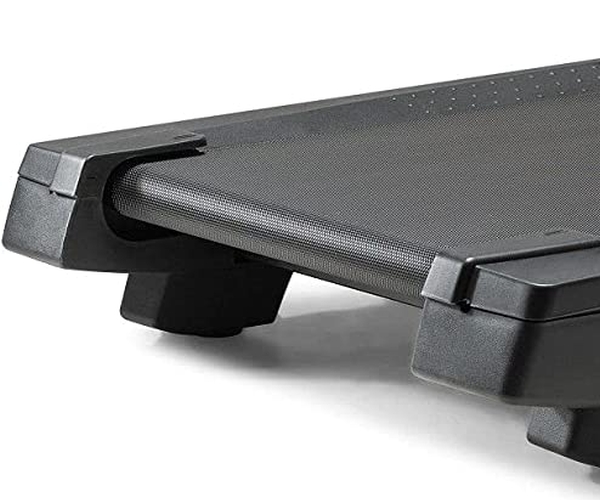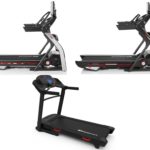 The belt on a treadmill is the most important part, it is where you walk or run on. It’s usually made of rubber or PVC and is moved by the treadmill motor on the rollers. It’s what we sometimes call “the track” in our reviews.
The belt on a treadmill is the most important part, it is where you walk or run on. It’s usually made of rubber or PVC and is moved by the treadmill motor on the rollers. It’s what we sometimes call “the track” in our reviews.
It goes over the top of the treadmill’s bottom frame and is pulled by rollers. The type of belt and what it’s made of can affect how it feels to run or walk on the treadmill. Some belts come with extra cushioning to make it easier on your joints, we will talk about them too.
Types
There are several types you will see on treadmill specifications for treadmill belts, but the main categories are single-ply, 2-ply, and 3-ply belts, so what are they?
Single-ply belts are the most basic type and are made of a single layer of material. They are generally the thinnest and most lightweight of the three types. They are known to be less durable and are typically found on entry-level treadmills suitable for walking.
2-ply belts are made of two layers of material and are more durable than single-ply belts. They are also more resistant to wear and are typically found in mid-range home treadmills.
3-ply belts are the most durable type. They are typically found on commercial-grade treadmills and some higher-end models. They are more resistant to wear and tear and suitable for frequent use.
So, the thicker and more durable the belt, but also the more expensive it will be.
How to Keep Your Treadmill Belt in Good Condition:
It’s important to do regular maintenance and check-ups to make sure your treadmill’s belt is in a good condition. Here are some important things you can do:
- Lubrication: One of the most important things you can do is lubricate the belt and deck if your treadmill does not have a self-lubricating belt. It will help to reduce friction and wear on the belt and will also make it run more smoothly. There are silicone-based lubricants specifically designed for treadmills, also check what your treadmill’s manufacturer suggests.
- Tightening: The belt should be tight enough to prevent slipping but not too tight that it causes excessive wear on the motor or rollers. You can check and adjust the belt tension by following the instructions in the owner’s manual.
- Cleaning: Clean the belt regularly with a damp cloth to remove any dirt or debris that can cause wear and tear.
- Alignment: Inspect the belt alignment, and make sure the belt is running straight, not crooked. A crooked belt can cause the motor to work harder, which can lead a motor failure.
These simple things will help to keep your treadmill’s belt running smoothly and extend its lifespan. Also, look for any cracking from time to time as it could be a sign that the belt needs to be replaced.

The Rollers
The rollers are the cylindrical parts that the belt runs over. There are usually two rollers on a treadmill, one at the front and one at the back. The front roller is the one that is powered by the motor and is responsible for moving the belt. The back roller is the idler roller, and its main function is to guide and tension the belt. On some treadmills, there are screws on the back side to adjust the back roller which helps to align the belt.
If the rollers are not properly adjusted or maintained, it can cause the belt to slip, which can lead to a less effective motor operation and can cause damage to the belt (stretching) or the motor. That’s why it’s important to check and adjust the belt tension regularly.
Belt Size
Running belt size is very important for selecting the right treadmill to meet your fitness goals. The belt width should be at least 20 inches wide for runners, but 22 inches is better. Larger users should also look for treadmills with a 22″ belt for comfort.
A minimum of a 50-inch-long belt is recommended for walkers and a 55-inch long is suitable for runners under 6 feet tall. If the user is over 6′ then at least a 60-inch belt is recommended.
